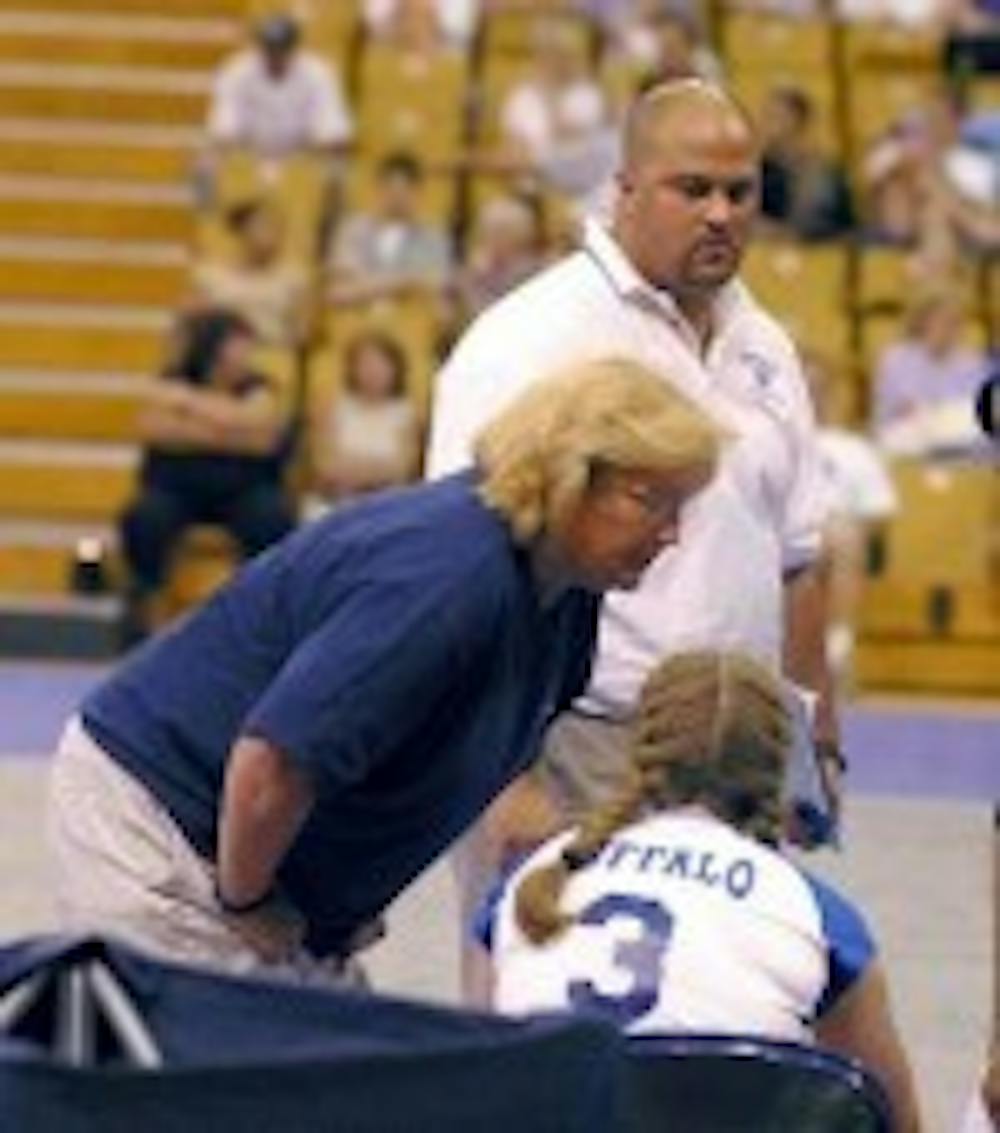Exactly 30 years to the date the Federal Office of Civil Rights (OCR), along with the National Collegiate Athletic Association, created legislation that is arguably the most debated topic in college athletics today.
It was founded on the principle of gender equality and was first instituted to protect the underrepresented sex, not solely women, as is widely believed. Under the federal civil rights statute of Title IX, sexual discrimination in education programs, including athletic programs that receive or benefit from federal funding, is strictly prohibited. Since roughly all academic institutions receive federal funding, they all must comply with Title IX. OCR within the U.S. department of education has been delegated to enforce the laws.
"It's top to bottom, for example the football and basketball team probably have 120 members," said UB Associate Athletic Director Nan Harvey. "To be in compliance, 120 women would have to receive the same level of treatment."
Before explaining the technicalities of the legislation, I want to make one thing clear. I, along with the interviewed parties, acknowledge the basis and agree with the principles upon which Title IX is based. The consensus we all share is that equalizing the proportionality of sports on a college campus should not come at the expense of a particular gender.
"When I first started coaching there were no scholarships, and after Title IX there was forced respect," said Head Volleyball Coach Sally Kus. "I wish it would have happened without a law."
Title IX consists of three components, or a three-prong test, which must be met in order for a college or university to be in compliance. The first is proportionality, stating that the ratio of the male to female student body must coincide precisely with the ratio of male to female student athletes. In other words, there has to be a sufficient number of sports offered relative to the number of students of both genders on campus.
The second component measures athletics-related student aid or scholarships, which also has to be proportionate to the male to female athlete ratio. It does not mean half of the scholarships must go to women and the other half must go to men.
Finally, the third prong affects the complete operating expenses of both men's and women's teams, ideally corresponding to the ratio of athletes by gender. This includes such areas as coaches' salaries, travel expenses, equipment and supplies as well as any other essential cost to operate a team.
However, if a school is not compliant in a certain area, it can satisfy guidelines recent remedying actions.
"If we weren't in compliance based on proportionality, we could say we added softball and we added crew, so we're making progress," added Harvey.
One of the major issues that drove me to investigate Title IX was the nation-wide trend of cutting men's collegiate programs. The disturbing thing is, the men's programs cut include swimming, wrestling and tennis. These programs are targeted because they are the most non-revenue producing sports and help shift the balance in favor of proportionality.
In many cases, Title IX is not to blame. Athletic programs have the discretion of which teams to support and which teams to cut. Often, schools that cut programs appear to have bad management. By simply carrying too many teams, their finances take a big hit and many have not complied with the law for too long and are paying the price now.
"I think it's easy to have a knee jerk reaction and blame Title IX, but there is so much more involved," said Head Baseball Coach Bill Breene. "I think the problems lie with the individual coaches and are more related to the athletic administrations. UB has done a great job in this area."
Administrator Nan Harvey has a concurring opinion on Title IX. "If you can defend the merits of athletics for a male you can defend the merits of involvement in athletics for a female."
Some feel that at the very least, the legislation needs review.
"I think maybe what Title IX was supposed to bring forth, there may have to be some set of legislation," said Kus. "I want to uphold what women have and attain it. There also has to be a way to maintain excellence in more sports."
Wrestling is a sport that has taken a big hit as a direct result of Title IX legislation. In 1980, there were 374 NCAA wrestling teams, last year that number dwindled to 239.
"I don't know a wrestling coach in the country that doesn't agree with Title IX," said Head Wrestling Coach Jim Beichner. "The OCR's interpretation of the way Title IX is presented needs to be looked at. The National Wrestling Coaches Association has filed a lawsuit with the NCAA saying gender quotas and proportionality are illegal."
In conclusion, this investigation into Title IX opened my eyes and changed my perspective. I initially thought Title IX was solely responsible, but now I see there is more to it and still feel slight modifications can be made.
Regardless of the outcome, I do not want teams cut whether they are men or women's for gender equity reasons. The legislation needs review, but administrators should stop blaming the law and take responsibility for poor judgments.





